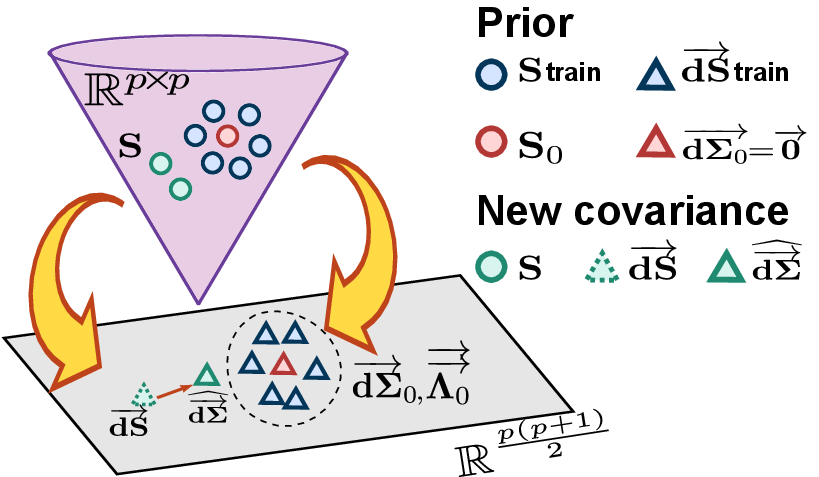Section:
New Results
Population-shrinkage of covariance to estimate better brain functional connectivity
Brain functional connectivity, obtained from functional Magnetic
Resonance Imaging at rest (r-fMRI), reflects inter-subject variations
in behavior and characterizes neuropathologies. It is captured by the
covariance matrix between time series of remote brain regions. With
noisy and short time series as in r-fMRI, covariance estimation calls
for penalization, and shrinkage approaches are popular. Here we
introduce a new covariance estimator based on a non-isotropic
shrinkage that integrates prior knowledge of the covariance
distribution over a large population. The estimator performs
shrinkage tailored to the Riemannian geometry of symmetric positive
definite matrices, coupled with a probabilistic modeling of the
subject and population covariance distributions. Experiments on a
large-scale dataset show that such estimators resolve better
intra-and inter-subject functional connectivities compared existing
co-variance estimates. We also demonstrate that the estimator
improves the relationship across subjects between their
functional-connectivity measures and their behavioral assessments.
More information can be found in Fig. 4 in [47].
Figure
4. (a) Shrunk embedding estimation workflow:
the empirical covariance is estimated from r-fMRI time-series;
it is projected onto a tangent space built from a prior population;
the embedding is then shrunk towards the prior
.
(b) Principle of tangent embedding shrinkage towards
population distribution.
|
|


